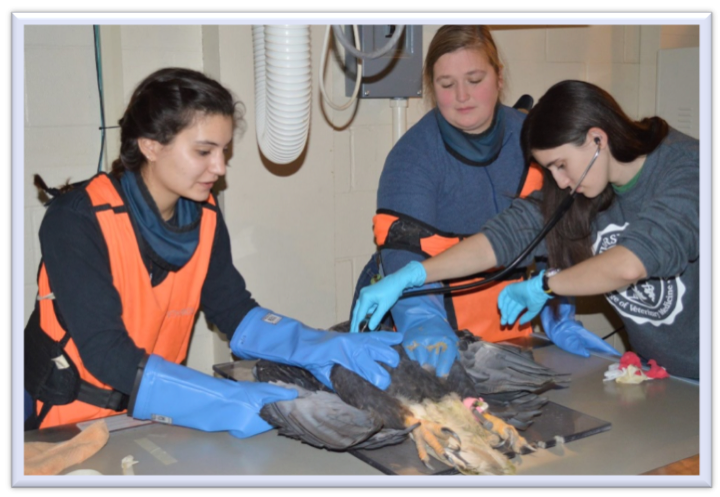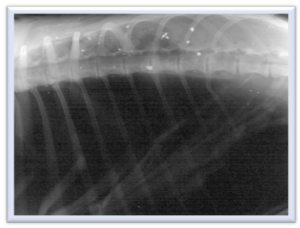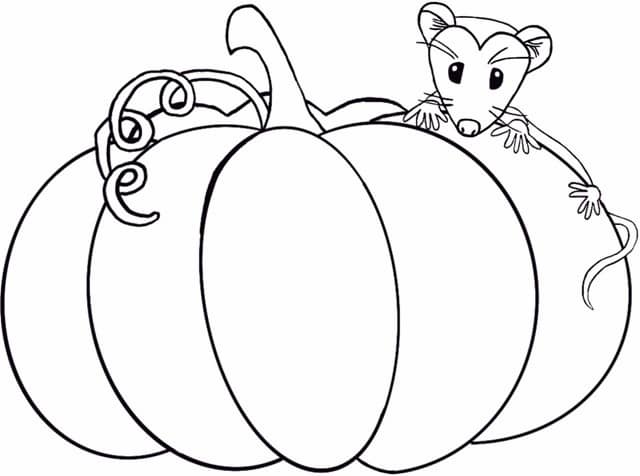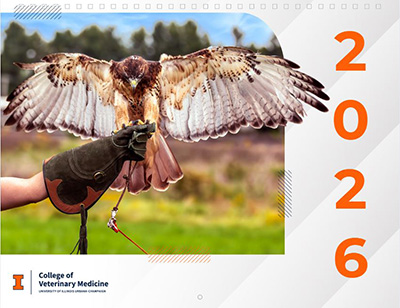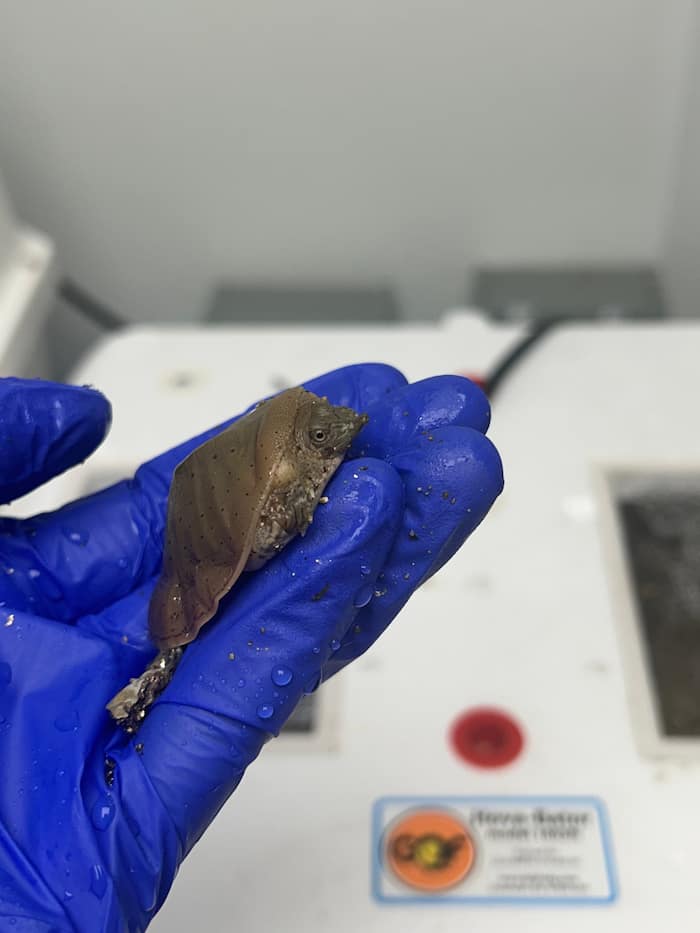Case Reports
Written by Anamaria Cruz
 It was a blustery, cold January afternoon, and my pager shift was nearly over. Just as I was walking to hand off my pager to my teammates on the next shift, the pager buzzed – once, then again. Two patients, both raptors, both sounding like they were suffering from head trauma. The first patient, a red-tailed hawk, had obvious signs of external trauma, broken bones, blood from the nares. It was started on fluid therapy designed to reduce swelling within the skull. The other patient was a bald eagle – presenting with similar neurologic signs, but, mysteriously, lacking any external damage. The triage team conducted a nervous system exam, and suspected poisoning. After a challenging blood draw and an anxious wait by the in-house lead analyzer, the culprit was revealed: sky-high levels of lead.
It was a blustery, cold January afternoon, and my pager shift was nearly over. Just as I was walking to hand off my pager to my teammates on the next shift, the pager buzzed – once, then again. Two patients, both raptors, both sounding like they were suffering from head trauma. The first patient, a red-tailed hawk, had obvious signs of external trauma, broken bones, blood from the nares. It was started on fluid therapy designed to reduce swelling within the skull. The other patient was a bald eagle – presenting with similar neurologic signs, but, mysteriously, lacking any external damage. The triage team conducted a nervous system exam, and suspected poisoning. After a challenging blood draw and an anxious wait by the in-house lead analyzer, the culprit was revealed: sky-high levels of lead.
In January 2018, the Wildlife Medical Clinic received three adult bald eagles over the course of two weeks. All three patients presented with severe neurologic signs, including torticollis (abnormally twisting neck muscles), head-turning, ventroflexion (head cranked downwards), ataxia (incoordination), and weakness.
When triaging the first eagle, the team became suspicious of lead toxicosis. While head trauma can cause neurologic signs, there were no external wounds or palpable bone fractures that would support a traumatic etiology. When the team ran a blood sample using the clinic’s lead analyzer, the machine reported the amount of lead in the sample was too high to be measured. The reportable range for this lead analyzer is between 3.3 – 65 micrograms per deciliter (µg/dL). Raptors and scavengers usually do not display clinical signs if their blood levels read <10 µg/dL (although some do not show toxicosis symptoms if their levels are as high as 20 µg/dL). The fact that this value read so high means it was well beyond the “clinical poisoning” stage.
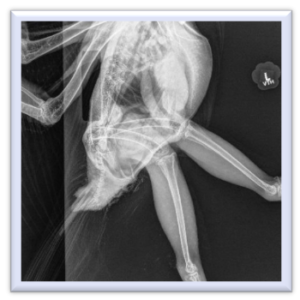
Volunteers quickly began supportive care and chelation therapy (described below) and scheduled radiographs. The x-ray images did not show evidence of the bright metallic opacity that would indicate lead, either from a bullet wound or ingestion of prey containing lead. Doctors suspected the bird had ingested prey containing lead and had already passed the prey through its digestive system, but the lead had been absorbed and was exerting the physiologic effects. Over the course of several days, the bird’s mentation and posture dramatically improved. It began standing upright, fighting handlers, and swallowing food on its own. Subsequent blood lead levels began decreasing. Sadly, the patient succumbed to other injuries sustained while it was debilitated from the lead’s effects. This toxicosis resulted in the bird stranded on the ground before being brought to the clinic.
Within days, a second eagle presented to the wildlife clinic. Similarly, the patient exhibited neurologic signs without evidence of trauma and the team ran a blood sample through the lead analyzer. This time, the level was read as 14.7ug/dL – while still an elevated level, it indicated a better prognosis for the bird. As with the first bird, this eagle did not have radiographic evidence lead in its system. Unfortunately, the eagle died within 24 hours of intake. A necropsy (autopsy) performed revealed evidence of both a viral disease process and head trauma.
A third eagle, presenting within two weeks of the first eagle, exhibited comparable clinical signs. Again, its blood lead levels were too high for the analyzer to read, and at the time that the radiographs were taken there was no evidence of lead. Despite chelation therapy, this eagle was found deceased in its cage before further lead readings could be evaluated.
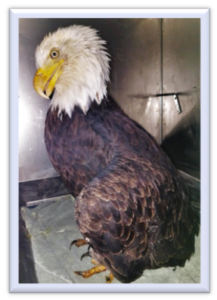
Ingestion of lead negatively impacts animal health, often resulting in neurologic dysfunction (Fig. 2). While some bird species, like geese, are more resilient to the effects of lead in their blood, bald eagles are highly susceptible and show clinical signs even with relatively low levels of lead. The patients discussed above exhibited the typical clinical signs seen with this type of damage to the nervous system: hindlimb paralysis, difficulty swallowing, weakness, and poor head control seen with central nervous system damage. By interfering with normal red blood cell function and slowly leaching into tissues, lead also has detrimental effects on the kidneys, liver, and gastrointestinal system – and these effects can develop long after the primary lead source has left the animal’s system. In fact, most patients do not have the lead in their gastrointestinal tract by the time we see them and observe the severe clinical signs, and this can make diagnosis challenging.
Diagnosis of lead toxicosis is usually done through bloodwork and radiology. Because our clinic has an in-house lead analyzer, teams are able to determine lead levels quickly – although the decision to do so is based on suspicion. In the above cases, teams did not have access to the radiology department during off-hours, so began treatment prophylactically and took radiographs at the next available time. As is common with lead ingestion, none of the patients had evidence of metallic sources in their bodies.
Treatment of lead toxicosis is the same for humans as it is for wildlife species. The most common compound used to bind heavy metals in the body isCaEDTA (calcium ethylenediamine-tetraacetic acid). When the CaEDTA is removed from the body via the kidneys, it brings the lead with it. Sadly, patients frequently succumb despite aggressive treatment. Even those that do survive may sustain permanent neurological deficits making release back into the wild impossible. The deadly effects of lead highlight the need for reducing its presence in the environment.

Sources of Lead Exposure
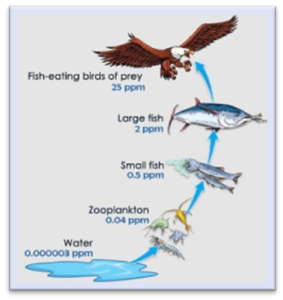
Predators and scavengers, like bald eagles, are typically exposed to lead via their prey; the prey, in turn, is exposed by anthropogenic sources via lead in their environment. While numerous waterfowl and aquatic species are affected by lead left in the habitat, the typical prey source for eagle exposure is through the consumption of fish. Fish and other aquatic species may either swallow lead fishing equipment or pick up lost lead tackle when ingesting lake-bottom grit (a habit many believe aides digestion). Biomagnification, or the increasing concentration of a toxin or heavy metal from one level to the next in the food chain, compounds the issue as a predator species consumes multiple affected prey animals (Figure 4). As fish are a common prey source for eagles, the birds are commonly exposed to this toxin. Unfortunately, fishing is not the only human activity that produces excess of lead in the environment.
Lead and lead-core bullets used to hunt big game and varmints alike are another major culprit of lead exposure (1). Lead bullet mechanisms make them fragment on impact and the pieces are flung into the surrounding environment or throughout the meat of the animal struck. A variety of species then inadvertently ingest the pieces (2). Additionally, if viscera from game meat is left in the field, it contains many small fragments of bullet-derived lead, which is then ingested by scavengers like Bald Eagles. Some literature reports that eagles can die from the ingestion of a single lead shot, bullet fragment, or sinker (3). The small, irregular pieces of lead that come from bullet fragments have higher surface areas and are therefore more quickly absorbed in the birds’ digestive tracts (1). As mentioned earlier, many scavengers may have higher-than-normal lead levels in their bloodstream, but eagles are particularly susceptible to its effects.
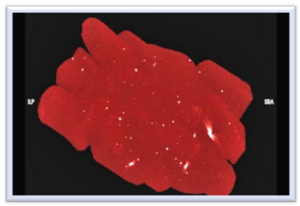
Image Credit: Cornatzer, et. al., 2009.
Lead bullet fragments are reported to have detrimental effects on wildlife and human health (4). Scientific literature has recorded lead’s contribution the decline of the California Condor, decreased growth rate of raptor species, as well as negative effects on ravens, Red Kites, globally-endangered vultures, dogs, and potentially other carnivores (5, 6, 7, 8, 9, 10). Additionally, anthropogenic sources of lead in the soil and groundwater can form new, long-lasting compounds (11, 12). As lead bullets break down in the environment, original lead and the produced compounds have potential to cause systemic lead increases in omnivores and herbivores, in addition to predators – all important for a healthy ecosystem.
Read more about the risks of lead bullets here: https://www.nps.gov/pinn/learn/nature/leadinfo.htm
Alternatives to Lead
Anthropogenic sources of lead in the environment causes widespread and long-lasting damage. Fortunately for conservation-conscientious sportsmen and women, alternative to lead hunting and fishing equipment exist. While these non-toxic alternatives took many years to gain popularity, related to the previously higher cost associated with non-lead equipment, these alternatives have numerous benefits in addition to reducing lead levels in the environment.
The tackle industry creates steel, bismuth, and plastic sinkers, and fishermen and women can ask their local sporting goods stores to stock non-lead fishing tackle. Ask about local drop-off locations to properly dispose of old lead sinks and jigs (13).
While the copper bullet was first developed in the 1980s as a premium big-game bullet, the associated expense has limited its popularity until recent years. Alternative bullets made of copper and other inert metals are now comparable with premium lead bullet prices as demand has grown. In fact, some of these non-toxic bullets are proven to be superior to lead in terms of penetration, retention of bullet weight (less fragmenting), and an overall more humane and faster kill (14). Special law enforcement units prefer all-copper bullets for situations requiring reliable penetration. All-copper bullets, with their high velocities, consistent expansion, excellent penetration, and absence of fragmentation, greatly improve the lethal accuracy of a given shot and reduce collateral damage to non-target wildlife, including bald eagles (15).

Image credit: http://huntingwithnonlead.org/whyUseNonlead2015.html
The ballistic performance and wide range of non-toxic bullet types manufactured should aid hunters in deciding to make the switch to lead-free bullets. Research has demonstrated that non-lead bullets are as effective as traditional bullets in ballistics testing (16). Copper bullets have been examined for toxicity and so far, the results are promising. Research has shown that American Kestrels and aquatic species do not suffer toxicosis as a result of copper ingestion (17, 18). Additionally, state laws are beginning to reflect growing awareness of human activity’s role in lead toxicosis cases. Federal law currently states, “Ammunition other than lead [is] required for waterfowl and when hunting w/ a shotgun (not including slugs) on wildlife refuges and waterfowl production areas” (19). Illinois specifically requires non-toxic ammunition for dove hunting on some public lands, while California requires non-toxic ammunition in eight counties in the range of the endangered California Condor.
For more comprehensive price comparisons and to find manufacturers of non-lead bullets, visit the Institute for Wildlife Research, the Lead-Free Hunting site, and an honest review from Daniel Cohen of “Fin and Field” (20, 21, 22).
While our volunteers and doctors continue to respond to lead toxicosis cases in our local wildlife, we encourage you to take a more proactive approach with us. Policy change takes time – precious time that predators and waterfowl of balanced ecosystems do not have. Citizen conservationists can reduce lead in the environment by properly disposing of lead sources (car batteries, lead-based paint chips, etc.) and by eliminating lead equipment used for hunting and fishing. A healthy ecosystem relies on predators and scavengers for balance, and a robust environment promotes the health of domestic animals and, of course, human beings as well (23).
References and Resources
I would like to thank Sarah Reich, DVM, for her insightful discussion of lead in our wildlife medical patients. I would also like to thank John Wipfler, III, MD, FACEP, for graciously sharing his knowledge of ballistics and lead-free hunting alternatives.
I would also like to credit the Institute for Wildlife Research organization and the Lead-Free Hunting site for permission to use their helpful images and descriptions, and for their resources for the conservation-conscious hunters.
- STROUD, R. K., AND W. G. HUNT. 2009. Gunshot wounds: A source of lead in the environment. In R. T. Watson, M. Fuller, M. Pokras, and W. G. Hunt (Eds.). Ingestion of Lead from Spent Ammunition: Implications for Wildlife and Humans. The Peregrine Fund, Boise, Idaho, USA. DOI 10.4080/ilsa.2009.0109. https://www.peregrinefund.org/subsites/conference-lead/PDF/0109%20Stroud.pdf
- Gremse, Felix, et al. “Performance of Lead-Free versus Lead-Based Hunting Ammunition in Ballistic Soap.” PLoS ONE, vol. 9, no. 7, 2014, doi:10.1371/journal.pone.0102015. https://www.ncbi.nlm.nih.gov/pmc/articles/PMC4100882/
- Lahner, L.L., and Franson. J.C., 2009, Lead poisoning in wild birds: U.S. Geological Survey Fact Sheet 2009–3051, 4 p. https://pubs.usgs.gov/fs/2009/3051/
- CORNATZER, W. E., E. F. FOGARTY, AND E. W. CORNATZER. 2009. Qualitative and quantitative detection of lead bullet fragments in random venison packages donated to the Community Action Food Centers of North Dakota, 2007. In R. T. Watson, M. Fuller, M. Pokras, and W. G. Hunt (Eds.). Ingestion of Lead from Spent Ammunition: Implications for Wildlife and Humans. The Peregrine Fund, Boise, Idaho, USA. DOI 10.4080/ilsa.2009.0111. https://www.nps.gov/pinn/learn/nature/upload/0111%20Cornatzer.pdf
- Herring, Garth, et al. “Ground Squirrel Shooting and Potential Lead Exposure in Breeding Avian Scavengers.” PLOS ONE, Public Library of Science, journals.plos.org/plosone/article?id=10.1371/journal.pone.0167926. https://www.ncbi.nlm.nih.gov/pubmed/27942006
- Haig, Susan M., et al. “The Persistent Problem of Lead Poisoning in Birds from Ammunition and Fishing Tackle.” The Condor, vol. 116, no. 3, 2014, pp. 408–428., doi:10.1650/condor-14-36.1. bioone.org/doi/10.1650/CONDOR-14-36.1.
- Craighead, Derek, and Bryan Bedrosian. “Blood Lead Levels of Common Ravens with Access to Big-Game Offal.” Journal of Wildlife Management, vol. 72, no. 1, Jan. 2008, pp. 240–245., doi:10.2193/2007-120. bioone.org/doi/abs/10.2193/2007-120
- Pain, DJ, et. al. “Lead contamination and associated disease and captive and reintroduced red kites (Milvus milvus) in England.” Sci Total Environ, vol. 376, no. 1-3, 15 Apr 2007, pp. 116-27. https://www.ncbi.nlm.nih.gov/pubmed/17307237.
- Nam, Dong-Ha, and Doo-Pyo Lee. “Abnormal Lead Exposure in Globally Threatened Cinereous Vultures (Aegypius Monachus) Wintering in South Korea.” Ecotoxicology, vol. 18, no. 2, 4 Feb. 2008, pp. 225–229., doi:10.1007/s10646-008-0275-0. https://www.ncbi.nlm.nih.gov/pubmed/18982447
- Høgåsen, Helga R., et al. “Lead Intoxication in Dogs: Risk Assessment of Feeding Dogs Trimmings of Lead-Shot Game.” BMC Veterinary Research, vol. 12, no. 1, 25 July 2016, p. 152., doi:10.1186/s12917-016-0771-z. https://www.ncbi.nlm.nih.gov/pubmed/27457446
- Li, Y, et. al. “The Weathering and Transformation Process of Lead in China’s Shooting Ranges.” Environ Sci Process Impacts, vol. 17, no. 7, Sep 2015, pp. 1620-33., doi: 10.1039/c5em00022j. https://www.ncbi.nlm.nih.gov/pubmed/26283517
- Martin, Andy W., et. al. “Antimony migration trends from a small arms firing range compared to lead, copper, and zinc.” Science of the Total Environment, vol. 463-464, 1 October 2013, pp. 222-228., doi: https://doi.org/10.1016/j.scitotenv.2013.05.086. https://www.sciencedirect.com/science/article/pii/S0048969713006396?via%3Dihub
- 2018 Illinois Fishing Information Guide, Illinois Department of Natural Resources Division of Fisheries. P. 76. https://www.dnr.illinois.gov/publications/Documents/00000845.pdf
- Phone interview and email correspondence with Dr. E. John Wipfler, III – http://johnwipfler.com/?page=Biography
- “Reasons to Use Non-Lead Ammunition.” Hunting with Non-Lead, Institute for Wildlife Studies, http://huntingwithnonlead.org/whyUseNonlead2015.html.
- Trinogga, Anna, et. al. “Are lead-free hunting rifle bullets as effective at killing wildlife as conventional lead bullets? A comparison based on wound size and morphology.” Sci Total Environ., vol. 443, 15 Jan 2013, pp. 226-232, doi: https://doi.org/10.1016/j.scitotenv.2012.10.084
- Franson, JC, et. al. “Copper pellets simulating oral exposure to copper ammunition: absence of toxicity in American kestrels (Falco sparverius).” Arch Environ Contam Toxicol, vol. 62, no. 1, Jan 2012, pp. 145-53., doi: 10.1007/s00244-011-9671-1. Epub 2011 Apr 22. https://www.ncbi.nlm.nih.gov/pubmed/21512804
- Thomas, VG, et. al. “Release of copper from sintered tungsten-bronze shot under different pH conditions and its potential toxicity to aquatic organisms.” Sci Total Environ., vol 374, no. 1, 1 Mar 2007, pp. 71-9. https://www.ncbi.nlm.nih.gov/pubmed/17276492.
- “State Regulations.” Lead-Free Hunting, Institute for Wildlife Studies, leadfreehunting.com/state-regulations.
- “Bullet Manufacturers and Retailers.” Lead-Free Hunting, Institute for Wildlife Studies, leadfreehunting.com/buynow/
- Cohen, Daniel. “The Run Down on Non-Lead Ammo.” Fin and Field Blog, 27 Apr. 2016, http://blog.finandfield.com/hunting/non-lead-ammo/?utm_source=wideopenspaces&utm_medium=read_article&utm_term=&utm_content=Article&utm_campaign=2016
- “Mission Statement.” One Health Initiative – One World One Medicine One Health, One Health Initiative, onehealthinitiative.com/mission.php.

